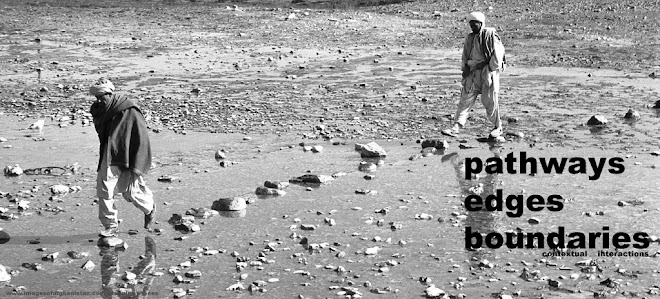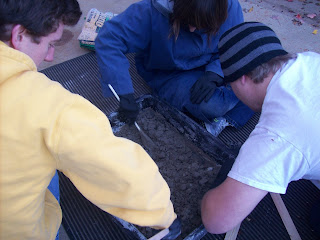





This is the desert groups test model. We mixed plaster and concrete and used pea pebbles as an aggregate.
For our mold we used a cardboard box and reinforced it with concrete. We then to insulation foam and cut it to fit all the sides and the used an xacto knife to carve out the ripple, so that we could achieve the ripple texture. And we made the cast hollow by creating a smaller rectangular prism out of the insulation foam. This is a representation of our smallest platforms.
However, there was a flaw with using the cardboard box. It was not quite strong enough to support the strength and bond of the concrete and it let the concrete seep into the edges enough...that it did not quite create the edges that we had hoped for.
We all worked cohesively to create this test model. Some of us mixed the concrete, while others of us carved ripples into the foam to get the texture that we wanted for our platforms.















































